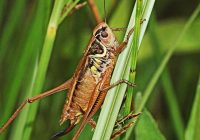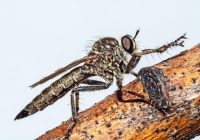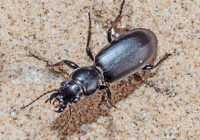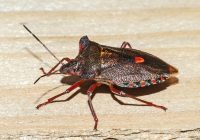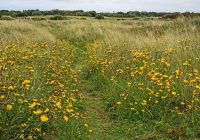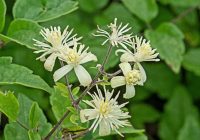Dr Phil Smith’s Wildlife Notes
August 2023
Another wet month the ‘media’ would have us believe. Or was it? Rachael Park’s rainfall data show that Formby received 89.5 mm, a little more than the long-term average of 80 mm. It is often forgotten that August is actually one of the wettest months of the year. Met. Office statistics show that August in our region was about average for temperature, rainfall and sunshine.
It’s been an amazing summer for records of insects that are travelling north in response to the warming trend and which we’ve never seen before. The latest to appear in Sefton is Roesel’s Bush-cricket, a distinctive creature that was certainly not overlooked in the past. Last year, Joshua Styles found the first for Merseyside at Netherley, South Liverpool. Our first turned up this month at Cabin Hill NNR (Simon Norman) and Cosby Coastal Park (Pete Kinsella). I’m frustrated that I didn’t see them. Even more spectacular, if a little further afield, was a pair of Lesser Marsh Grasshoppers photographedby Andy Beech at Arkholme near Fleetwood. Another was recorded near Ormskirk. This south-eastern species has been on the move for some years but has now ‘jumped’ across the country from Yorkshire. The Brown Heath Robberfly is also increasing here. This fierce little predator is widespread and locally common on the heaths, dunes and downs of southern Britain but, until a few years ago, there had been only one authenticated Sefton Coast record. However, this month, several were photographed at Freshfield Dune Heath, one on the outskirts of Formby and another at Crosby Coastal Park. I even managed to account for two of them! In the July notes, I described my first encounter with the Bee Wolf, a colourful solitary wasp that has recently arrived with us. Its increase has been dramatic, with sightings this month at regular intervals between Crosby and Southport. On 20th I was at Falklands Way, Ainsdale with Trevor Davenport perusing a patch of Canadian Goldenrod. “There doesn’t seem to be much here” I said. Trevor replied “What about this wasp”, handing me a female Bee Wolf he had just potted. A nearby Snowberry patch attracted three magnificent Hornet Hoverflies, as well as Lesser Hornet and Great Pied Hoverflies. I couldn’t find any Speckled Bush-crickets in their usual colony but Trevor still has them in his Freshfield garden. Other insect records of note included the impressive black beetle Broscus cephalotes that lives under driftwood on the strandline, a smart Red-legged Shieldbug on the Wicks Lake fence, Yellow-legged and Four-banded Beegrabbers on Ragwort at Ravenmeols and Heather Colletes, a solitary bee that abounds on Freshfield Dune Heath.
One way to encourage insect recording and finding new species is through the workshops and field trips organised by Liverpool Museum’s Tanyptera Project. On 25th, I led a workshop on Orthoptera (grasshoppers and crickets) and shieldbugs that was attended by ten enthusiasts. Our field visit (with permission) was to Freshfield Dune Heath Nature Reserve, where we found all three of the Sefton Coast’s grasshoppers and seven species of shieldbugs, a special prize being the uncommon Bronze Shieldbug. Unexpected incidentals included two Brown Heath Robberflies.Another bonus was that I sold five copies of my book on Insects of the Sefton Coast.
Thanks to the rain, the dunes were even more floriferous than usual. Golden drifts of Umbellate Hawkweed were particularly pleasing to the eye, while the younger stages of the Green Beaches at Ainsdale supported a stunning display of Grass-of-Parnassus. It is easy to forget that this iconic flower of the Sefton dunes is declining towards extinction in much of England, being red-listed ‘Vulnerable’. During a visit to the northern Birkdale frontal dunes, I was delighted to find 40 large plants of another Sefton Coast speciality,the endemic Isle of Man Cabbage. These are the offspring of plants and seed translocated here from Crosby in 2011 by volunteers just before their habitat was destroyed by a coast protection scheme. I took the opportunity to remove young Sea Buckthorn invading their new home.
Joyce and David Jarvis and I completed our survey of the introduced Traveller’s-joy (Clematis vitalba) on the Sefton sand-dunes. After much effort, we located and measured 116 patches of this highly invasive vine, covering 0.63 ha (1.6 acres). Most of the clumps were on Ainsdale Sandhills LNR, with single large patches on Ainsdale Sand Dunes and Cabin Hill NNRs. It is clear that the plant is capable of dominating large areas of fixed-dune, eliminating most other species. Our next task is to write a report, with recommendations for control. Finally, I fought my way through waist-high vegetation to measure one of the rarest of British plants, a bush of Don’s Willow in the middle of Birkdale Sandhills LNR. I hadn’t seen it for ten years but there it was and bigger than ever. This completed my study of the 40 or so bushes on the Sefton dunes. Only three or four individuals are known in the rest of Britain, so we have a special responsibility to look after this willow.

